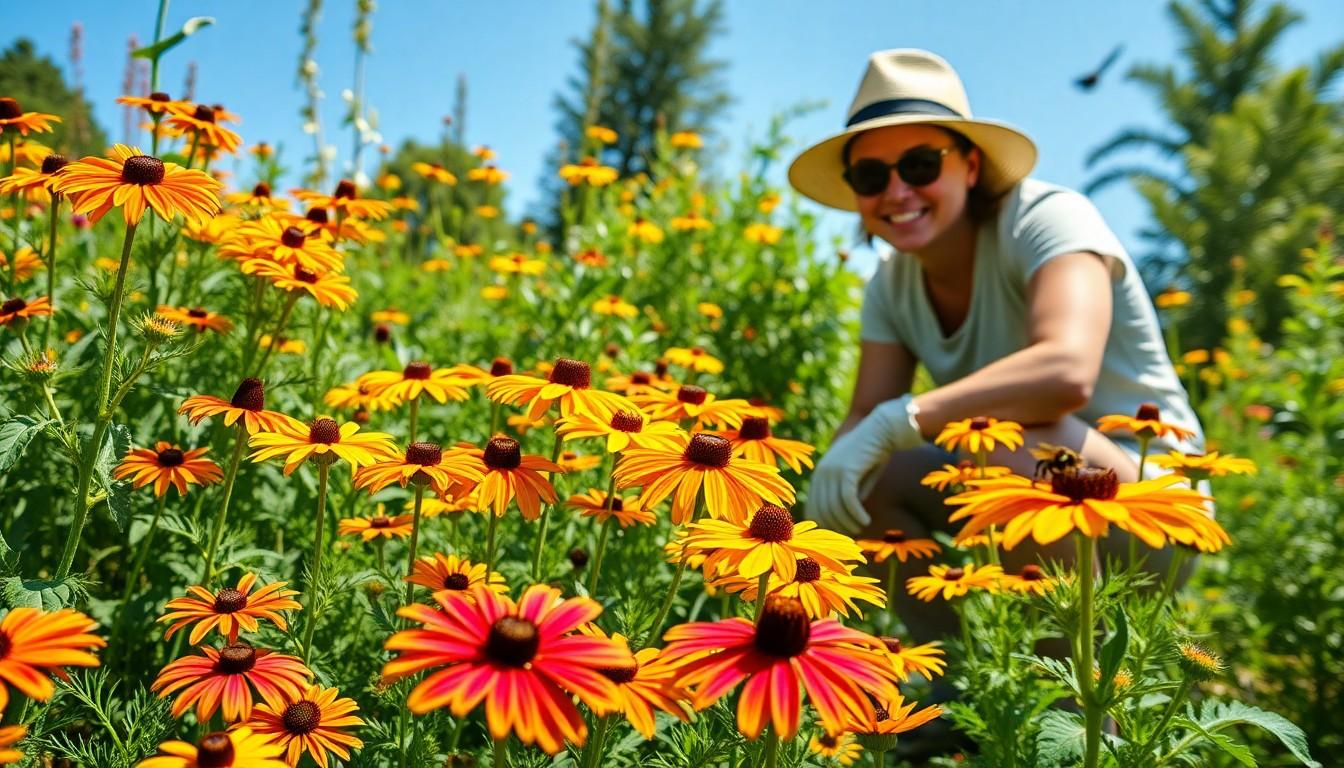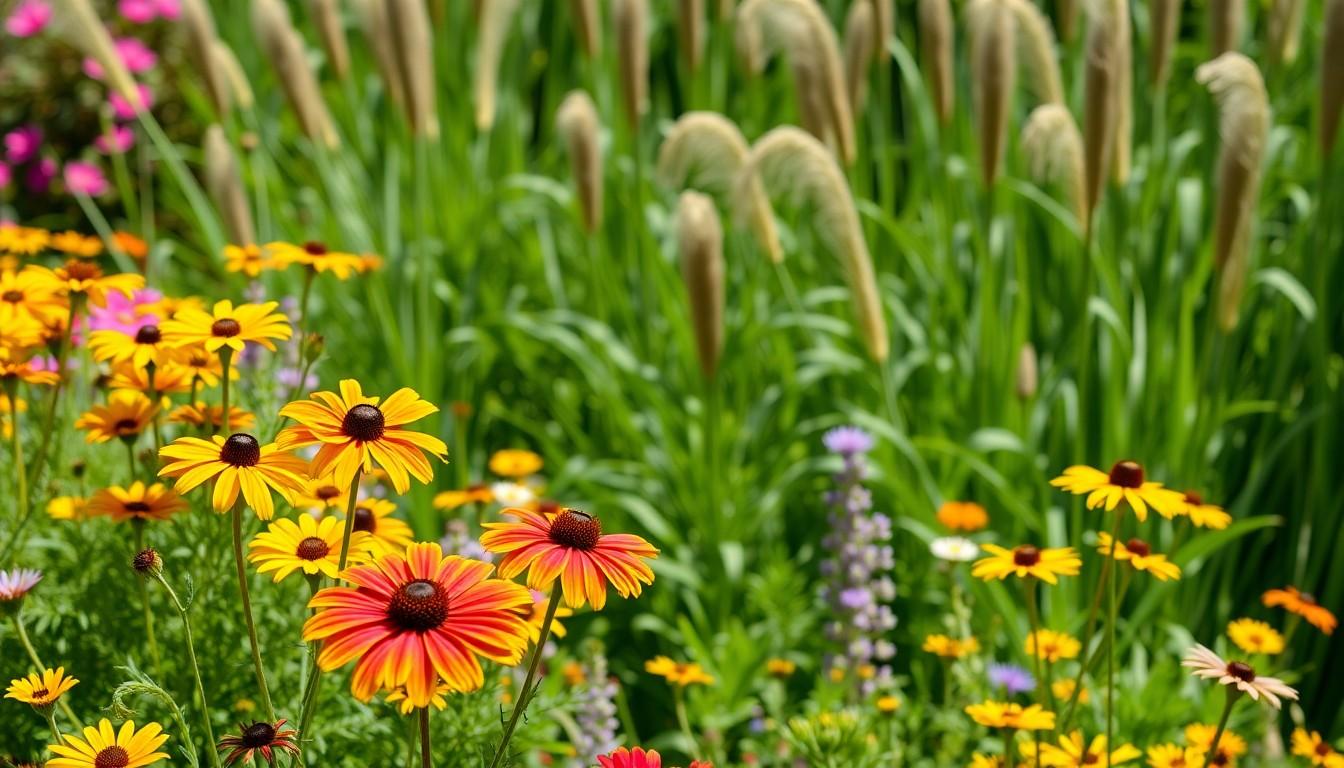The Best Fluffy Pancakes recipe you will fall in love with. Full of tips and tricks to help you make the best pancakes.

Native Florida Plants Full Sun: Transform Your Garden with Vibrant, Low-Maintenance Beauty
When it comes to landscaping in the Sunshine State, choosing native Florida plants that thrive in full sun is a game-changer. These sun-loving beauties not only bring vibrant colors to any garden but also save time and money. Why? Because they’re well-adapted to Florida’s unique climate and require less water and maintenance than their non-native counterparts.
Overview Of Native Florida Plants
Native Florida plants thrive in full sun and play a crucial role in local ecosystems. They attract pollinators, such as bees and butterflies, supporting biodiversity. These plants are adapted to thrive in Florida’s sandy soils and variable rainfall, making them ideal for sunny gardens.
Many options exist for those looking to enhance their landscapes. Ogeechee lime offers bright green foliage and clusters of fragrant flowers. Florida wildflower species, including coreopsis and black-eyed Susan, bring splashes of color and require minimal care. Sea oats provide ornamental beauty while preventing coastal erosion.
Environmental resilience defines native plants. They withstand drought and recover quickly from heavy rains, reducing the need for irrigation. By choosing native species like swamp milkweed or beach sunflower, gardeners can conserve water and reduce fertilizer usage.
Wildlife benefits significantly from native plants. Birds find shelter and food in dense thickets, while insects utilize the foliage for nourishment. Even small mammals interact with native vegetation, creating a balanced ecosystem.
Community awareness about the importance of native plants continues to grow. Educational programs promote their use in gardens and landscapes, encouraging sustainable practices. Landscaping with these plants reduces maintenance time and effort, allowing more enjoyment of outdoor spaces.
Native Florida plants provide crucial benefits for local wildlife and sustainable gardening practices. Their natural beauty and adaptability make them an excellent choice for sunny Florida gardens.
Benefits Of Using Native Plants

Native Florida plants offer significant advantages for gardens, especially those exposed to full sun. These benefits range from supporting local ecosystems to enhancing the visual appeal of outdoor spaces.
Environmental Impact
Planting native species contributes positively to the environment. They require less water compared to non-native varieties, which helps conserve valuable resources in Florida’s variable climate. Adapted to local conditions, these plants also promote biodiversity by attracting native pollinators like bees and butterflies. Furthermore, they provide crucial habitats for wildlife, ensuring a balanced ecosystem. The use of native plants reduces the need for chemical fertilizers and pesticides, promoting healthier soil and water quality.
Aesthetic Appeal
Native plants accentuate gardens with their vibrant colors and diverse textures. Their natural beauty creates a stunning landscape that reflects Florida’s unique flora. Options like coreopsis and black-eyed Susan add bright splashes of yellow and orange, livening up any garden space. Sea oats contribute architectural interest and movement, especially in coastal areas. Choosing native plants ensures year-round visual interest, as many species bloom in different seasons. This selection ultimately connects garden aesthetics to the native environment, enhancing the overall charm of outdoor settings.
Best Native Florida Plants For Full Sun
Choosing native Florida plants for full sun areas provides practical and aesthetic benefits. These plants thrive in sunny conditions, enhancing gardens while supporting local ecosystems.
Flowering Plants
Coreopsis and black-eyed Susan represent vibrant flowering options. Both plants display bright yellow and orange blooms, attracting bees and butterflies. Blanket flower offers another excellent choice with its daisy-like appearance and ability to endure drought. Blue-eyed grass adds a striking blue hue to landscapes, enhancing visual appeal. These flowering plants require minimal maintenance, thriving naturally in Florida’s climate.
Grasses and Ground Covers
Muhly grass stands out for its fluffy pink flower plumes, providing texture and movement in sunny gardens. Lovegrass creates a lush green carpet that tolerates drought, ideal for ground cover. Other native options such as beach sunflower and creeping teddy bear also serve to control erosion while adding color. These grasses and ground covers not only conserve water but also support pollinators in the region.
Shrubs and Small Trees
Firebush makes an excellent choice for attracting hummingbirds with its vibrant orange-red flowers. Yaupon holly offers a hardy option, providing berries that feed birds. Another great shrub, elderberry, produces clusters of white flowers, appealing to pollinators. Additionally, the saw palmetto provides an iconic element with its fan-shaped leaves. These shrubs and small trees thrive in full sun, enhancing biodiversity while requiring minimal care.
Care And Maintenance Tips
Caring for native Florida plants in full sun optimizes their growth and resilience. Proper attention to their watering and soil needs enhances their survival and aesthetic appeal.
Watering Needs
Watering habits vary depending on the season and specific plant types. Establishing a routine for deep watering encourages roots to grow deeper, making plants more drought-resistant. In general, native plants require minimal irrigation once established, typically thriving on natural rainfall. It’s essential to monitor soil moisture; overwatering can lead to root rot. Even in dry periods, watering every couple of weeks suffices, particularly for young plants still developing robust root systems. Adapting watering practices to local rainfall patterns saves water and supports sustainability.
Soil Requirements
Soil preferences differ among native Florida plants, but many thrive in sandy or well-draining mixtures. Amending soil with organic matter can improve nutrient availability and water retention while enhancing overall structure. Well-draining soil prevents standing water, which is crucial for root health. Testing soil pH ensures optimal growing conditions; many natives prefer slightly acidic to neutral soil. Mulching around plants helps retain moisture while reducing competition from weeds. Understanding and meeting these soil requirements ensures plants flourish in sunny gardens.
Conclusion
Embracing native Florida plants in full sun gardens is a smart choice for both beauty and sustainability. These resilient species not only thrive in the state’s unique climate but also contribute significantly to the local ecosystem. By selecting plants like coreopsis and firebush, gardeners can create vibrant landscapes that require minimal maintenance and water.
The benefits extend beyond aesthetics. Native plants support wildlife, promote biodiversity, and enhance soil health. As awareness grows about their importance, more people are choosing these plants for their gardens. This shift not only beautifies outdoor spaces but also fosters a healthier environment. Ultimately, native Florida plants are an invaluable addition to any sunny garden, offering lasting rewards for both nature and the gardener.




